Huskies can get along with cats with proper socialization and training.
| Socialization Period | Introduce Huskies to cats before 6 months of age for better chances of cohabitation. |
| Prey Drive | Huskies have a high prey drive that may need to be managed around cats. |
| Supervised Introductions | Always supervise initial interactions between Huskies and cats. |
| Training Requirement | Huskies require consistent training and commands such as leave it to coexist with cats. |
| Individual Temperament | Each Huskys compatibility with cats depends on its individual temperament. |
| Success Rate | While there is no exact percentage, successful cohabitation varies widely depending on the pets. |
| Escape Artist | Huskies are known to be escape artists and may chase cats if not properly contained. |
| Energy Levels | Huskies are high-energy dogs and may overwhelm more docile cats. |
| Space Consideration | Provide separate safe spaces for cats to escape to when they feel overwhelmed. |
| Age of the Pets | Younger animals generally adapt to cohabitation better than older ones. |
Huskies and cats get along. Huskies are known for their strong prey drive, which can make it challenging to introduce them to a cat.
This natural hunting instinct, particularly towards smaller animals, is deeply ingrained in the Husky breed. It’s important to acknowledge this behavior and take proactive steps to manage and redirect it when cohabitating with a cat.
One strategy is to provide mental and physical stimulation to fulfill the Husky’s energy needs, thereby reducing the temptation to chase or harm the cat. Additionally, obedience training and positive reinforcement techniques can be employed to teach the Husky to control its prey drive and coexist peacefully with the feline companion.
By understanding and addressing the prey drive of Huskies, a harmonious relationship can be fostered between these pets.
Husky and cats get along
For those looking to dive deeper into understanding Husky behavior beyond their interactions with cats, our comprehensive guide on body language cues offers valuable insight. Uncover the secrets behind your Husky's expressions by exploring the reasons behind a Husky's ear movements and what they signify.

Socialization and Its Impact
Socialization plays a crucial role in ensuring that Huskies and cats get along peacefully. Early and consistent exposure to cats during the socialization period is vital for Huskies to understand and respect the feline species.
This exposure helps the Husky develop positive associations with cats, making it more likely for them to coexist harmoniously in the same household. Additionally, proper socialization can significantly reduce the Husky’s prey drive instincts towards cats, creating a more amicable and safe environment for both pets.
It is important for owners to prioritize socialization efforts from a young age to lay the foundation for a positive and peaceful relationship between their Husky and their feline companion.
Husky and cats get along
During the socialization process, it’s essential to ensure that interactions between the Husky and the cat are always supervised, and that the cat has the opportunity to retreat to a safe space if needed.
By carefully managing and facilitating these interactions, owners can help establish a bond based on mutual respect and understanding between the Husky and the cat.
If your interest in the wellbeing of huskies extends beyond their social skills, you might find value in understanding their breeding habits. Discover insights on recognizing pregnancy in these spirited companions in our detailed guide, recognizing the signs of pregnancy in Huskies.
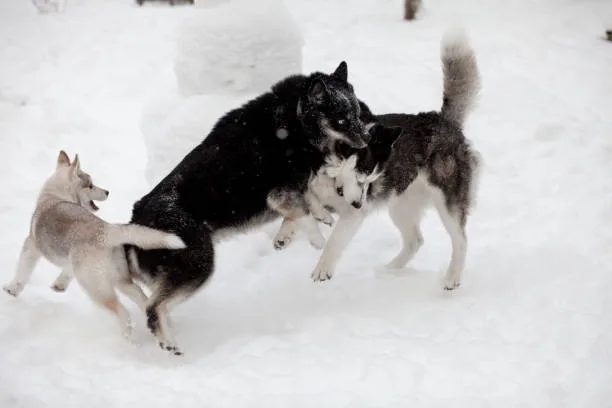
Training Your Husky to Be Cat-Friendly
Husky and cats get along
Training your Husky to be cat-friendly requires patience, persistence, and a deep understanding of your Husky’s behavior. Start by using positive reinforcement to reward calm and respectful behavior around cats.
This can include treats, praise, and gentle petting when your Husky interacts calmly with the cat. Consistency is key, so establish a regular training routine that includes short, frequent sessions to reinforce positive behaviors.
Additionally, ensure that your Husky understands basic obedience commands, such as “sit” and “stay,” which can be useful in managing interactions with cats. By using positive reinforcement and consistent training, you can help your Husky learn to coexist peacefully with cats and create a harmonious household.
Husky and cats get along when they are trained and managed properly, establishing a respectful and calm relationship between the two..
For those facing challenges beyond feline companionship, our comprehensive guide offers insights into Husky behavior toward smaller canines. Explore our strategies for fostering harmony between your Husky and other pets by reading "Understanding and Managing Husky Prey Drive".
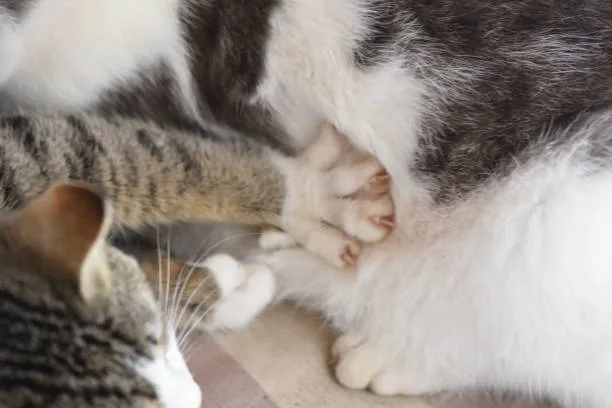
Creating a Safe Introduction
To safely introduce a Husky to a cat, it is crucial to start in a controlled environment where both the Husky and the cat feel secure. This may involve initially keeping the pets in separate rooms and allowing them to become familiar with each other’s scent.
Once this has been accomplished, controlled visual introductions can take place, with the Husky on a leash to ensure complete supervision. It’s important to pay attention to the body language signals of both pets during the introduction, looking for signs of stress, fear, or aggression, and intervening if necessary.
By carefully managing the initial interactions, it is possible to create a foundation for a harmonious relationship between the Husky and the cat.
By gradually increasing their time together in a safe and controlled manner, the Husky and the cat can begin to build trust and familiarity with each other. Consistent supervision and positive reinforcement during these initial introductions are key to setting the stage for a peaceful coexistence.
To ensure a harmonious household, mastering the introductory process is crucial, but understanding the energy levels of your Husky is equally important. Dive deeper into their behavior and learn when your Husky might start settling down by exploring our detailed guide on Husky behavior and calming milestones.
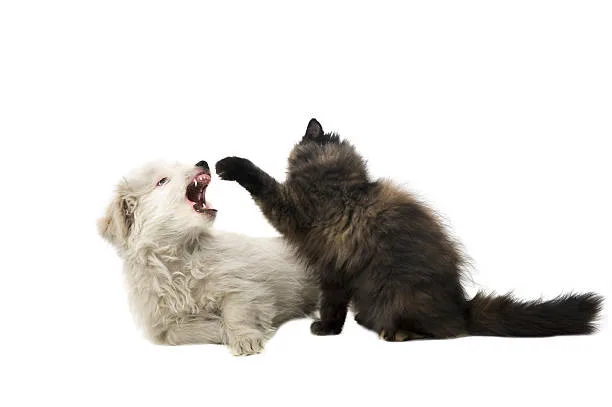
Environment Matters: Safe Spaces for Cats
Creating a harmonious environment for Husky and cats coexistence involves ensuring that cats have safe spaces to retreat to, away from the potential high energy of the Husky. This is crucial for a cat’s well-being, as it provides them with a sense of security and privacy.
Utilizing high perches, such as cat trees or shelves, allows cats to observe their surroundings from a safe vantage point, while separate rooms designated specifically for the cat can offer a sanctuary when they need solitude. These dedicated spaces play a vital role in minimizing stress and potential conflicts, ultimately fostering a peaceful living situation for both Husky and cats.
By creating cat-only areas, owners can help prevent unwanted interactions and provide a comforting retreat for the feline companion, ensuring their safety and well-being. Implementing high perches and separate rooms enables cats to escape from potential stress or danger, ultimately contributing to a harmonious cohabitation with Huskies.
To ensure the overall well-being of your furry friend extends beyond just stress-free environments, delve into a comprehensive understanding of how to manage their seasonal shedding. Learn more about this essential aspect of pet care in our detailed article, "A Guide to Blowing Coat in Winter".
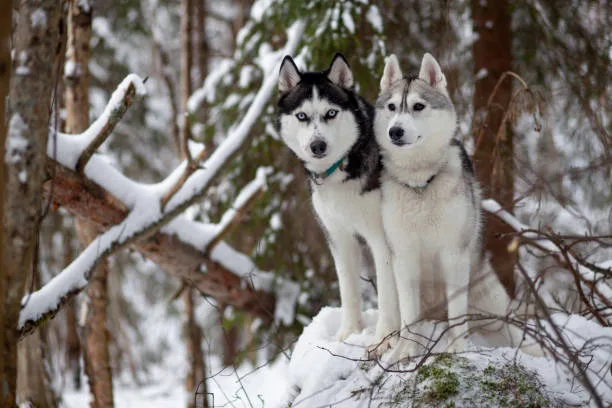
Husky's Exercise Needs and Cat Safety
Huskies are known for their high energy levels, which can sometimes lead to chasing behavior, posing a potential risk to cats in the household. To prevent this, it’s crucial to ensure that Huskies receive ample exercise to expend their energy in a positive way.
Regular walks, runs, and play sessions are essential to keep Huskies mentally and physically stimulated, reducing the likelihood of them focusing their energy on chasing cats. Adequate exercise not only benefits the Husky’s overall well-being but also contributes to a harmonious living environment by minimizing the potential for conflict with the feline members of the household.
It’s important to understand that a well-exercised Husky is less likely to engage in unwanted behaviors such as chasing, as their energy has been appropriately directed.
Engaging in interactive activities and providing enrichment toys can also help satisfy their physical and mental stimulation needs, further reducing the likelihood of them pursuing the cats. Moreover, a tired Husky is more likely to exhibit calm and controlled behavior around the cats, fostering a safer and more peaceful coexistence.
Understanding the high-energy demands of Huskies and addressing their exercise requirements can significantly minimize their inclination to chase after household pets like cats. While managing their physical activity is vital, exploring other aspects of Husky care can further enhance their well-being. To discover valuable insights on maintaining your Husky's health and hygiene, which could affect their odor, delve into our comprehensive guide titled Unraveling the Mystery Behind Your Husky's Distinctive Scent.
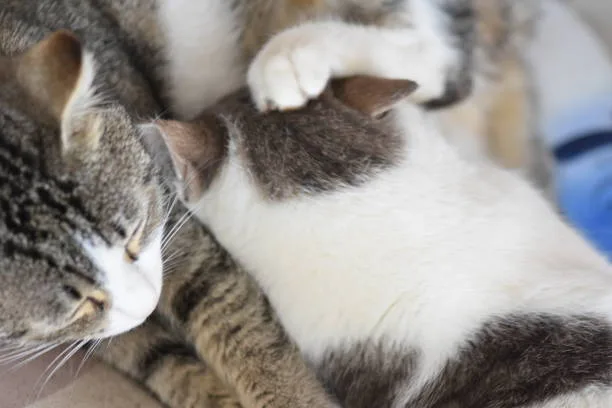
Feeding Time: Keeping the Peace
Feeding time can be a source of tension between Huskies and cats, but with the right strategies, food aggression can be minimized. Separate feeding areas for the Husky and cat can help prevent any conflicts over food.
Additionally, establishing consistent feeding schedules for both pets can create a sense of routine and predictability, reducing the likelihood of food-related disputes. It’s important to provide ample space between the feeding areas to ensure that each pet has their own undisturbed dining environment.
By implementing these measures, pet owners can help ensure that both their Husky and cat can enjoy their meals in peace..
To explore further strategies for managing your Husky's behavior and preventing aggression, delve into our comprehensive guide on addressing Siberian Husky dominance issues. Ensure harmonious cohabitation between your pets by visiting Managing Husky Behavior and Dominance.
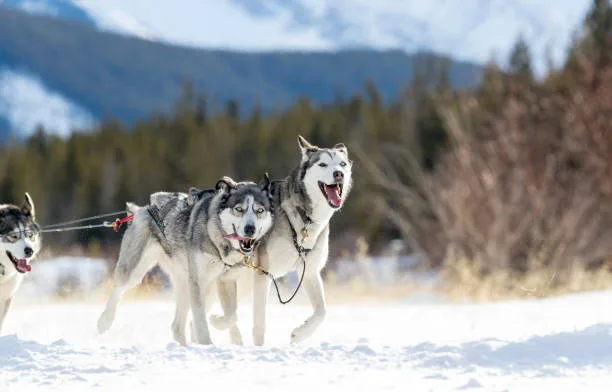
Body Language and Behavior Cues
American Kennel Club: Husky and cats get along
Understanding the body language and behavior cues of both Huskies and cats is crucial in preventing conflicts and fostering a harmonious living environment. Huskies and cats communicate through subtle signals, and being able to interpret these cues can help mitigate potential misunderstandings.
For instance, a Husky’s erect posture and direct eye contact may indicate alertness or assertiveness, while a cat’s flattened ears or twitching tail could signify agitation or anxiety. Recognizing these signs allows pet owners to intervene and redirect their pets’ attention before tensions escalate.
Additionally, being attuned to their body language enables owners to create safe spaces and boundaries, ensuring that both Huskies and cats feel secure and respected in their shared environment.
Observing and deciphering the non-verbal cues of huskies and cats can lay the groundwork for a tranquil coexistence, minimizing misunderstandings and fostering a positive shared environment. For an in-depth look at how exercise plays a pivotal role in the behavior and health of your Husky, discover our comprehensive guide on Husky Exercise Essentials, a key aspect to consider in your quest for a peaceful pet-filled home.
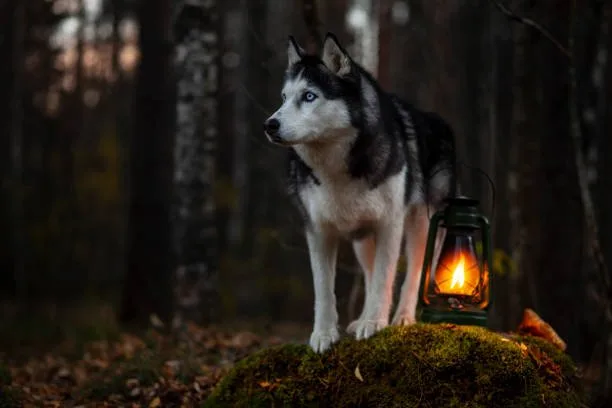
Monitoring Interactions and Setting Boundaries
Monitoring interactions between your Husky and cat is crucial for ensuring a harmonious household. It’s essential to supervise their interactions and be attentive to their body language and behavior cues.
By closely monitoring their interactions, you can intervene if any signs of tension or aggression arise, preventing potential conflicts.
Reddit Husky and cats get along
Setting clear boundaries for acceptable behavior is equally important. Establishing rules and boundaries for both your Husky and cat helps them understand what is expected of them.
For example, teaching your Husky to respect the cat’s space and not to chase or play too rough, while also teaching your cat where they can retreat to and have their own safe area.
Understanding the intricate dynamics between Huskies and cats is crucial for preventing behavioral issues and ensuring a harmonious home environment. For a deeper exploration of Husky behavior and expert management tips, delve into our detailed article on the reasons behind Husky escapism.

The Role of Scent in Introducing Your Husky to a Cat
On Quora about: Husky and cats get along
Introducing your Husky to a cat involves a gradual process that starts with familiarizing them with each other’s scents. This is crucial as scent plays a significant role in the acclimatization process for both pets.
To begin acclimating them to each other’s scent, start by swapping bedding or toys between the two animals. This allows them to become accustomed to each other’s unique scent in a non-confrontational manner.
Additionally, use a cloth to gently rub each pet’s cheeks and then swap the cloths, allowing both the Husky and the cat to sniff and investigate the other’s scent. These methods help to create a sense of familiarity and comfort, laying the groundwork for a smoother visual introduction.
It is important to give the pets ample time to adjust to each other’s scent before progressing to the next stage of their introduction process.
.
Familiarizing pets with each other's scents lays the groundwork for peaceful cohabitation, serving as the critical first step toward a harmonious relationship. For those contemplating adding a vibrant Red Husky to their family, discover detailed insights on ownership costs by exploring our dedicated article, Understanding the Price of a Red Husky.
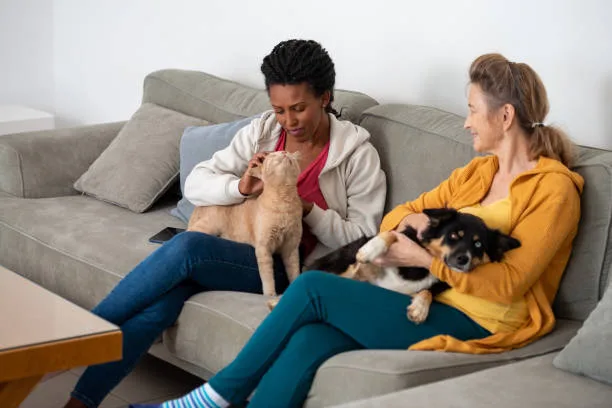
Troubleshooting Common Coexistence Issues
Huskies and cats get along. Troubleshooting common coexistence issues involves addressing potential challenges that may arise when Huskies and cats share a living space.
Jealousy, territorial behavior, and play aggression are commonly encountered issues that require careful management to ensure a peaceful cohabitation. To address jealousy, it’s essential to provide equal attention, love, and care to both the Husky and the cat.
This can help alleviate any feelings of competition and minimize potential conflicts. Territorial behavior can be managed by creating separate spaces for each pet, including designated feeding areas, resting spots, and litter boxes.
Additionally, providing plenty of environmental enrichment and mental stimulation for the Husky can redirect their focus away from territorial tendencies. Play aggression can be addressed through structured play sessions and positive reinforcement training to teach the Husky appropriate play behavior with the cat.
Consistent supervision and intervention when necessary are key in troubleshooting and managing these common coexistence issues.
When addressing jealousy, it’s important to ensure that the Husky and the cat receive equal attention, love, and care to minimize feelings of competition.
To manage territorial behavior, create separate spaces for each pet, including designated feeding areas, resting spots, and litter boxes. Additionally, provide environmental enrichment and mental stimulation for the Husky to redirect their focus away from territorial tendencies.
Address play aggression through structured play sessions and positive reinforcement training to teach the Husky appropriate play behavior with the cat.
Consistent supervision and intervention when necessary are essential in troubleshooting and managing these common coexistence issues.
For insights into another concern that Husky owners often face regarding their pet's health, explore our article on addressing watery stool in Huskies. Delve into the causes and solutions by reading ‘Why Does My Husky Have Watery Stool?’ to keep your furry companion in the best of health.
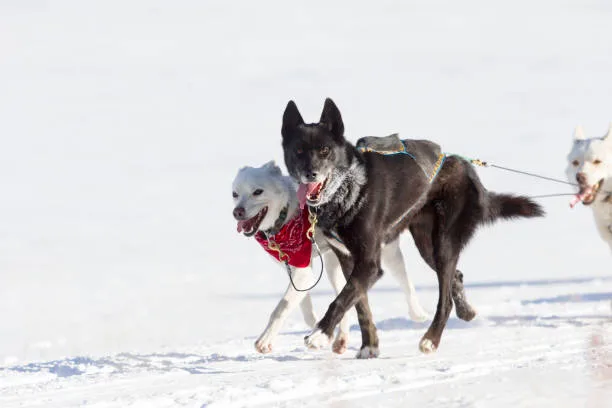
Understanding Husky and Cat Compatibility
Introducing Huskies and cats can be a rewarding experience, but it hinges on understanding the compatibility factors at play. It’s essential to recognize that individual personalities, both of the Husky and the cat, play a significant role in their ability to coexist peacefully.
A proper introduction, conducted with patience and care, sets the stage for a positive relationship. Furthermore, the typical temperament of a Husky is a pivotal factor in determining the likelihood of a harmonious bond with a feline counterpart.
By considering these elements, pet parents can proactively pave the way for a successful and amicable cohabitation. Husky and cats get along when these fundamental parameters are conscientiously addressed.
Ultimately, the synergy between a Husky and a cat hinges on an understanding of their individual characteristics and the gradual process of introduction and acclimatization.
Understanding the dynamics between huskies and cats is just the beginning. For those passionate about animal behaviors and interspecies relationships, explore the efforts being made to protect another majestic animal by joining conservation initiatives for polar bears on our dedicated page, Polar Bear Conservation: Take Action and Make a Difference Today.
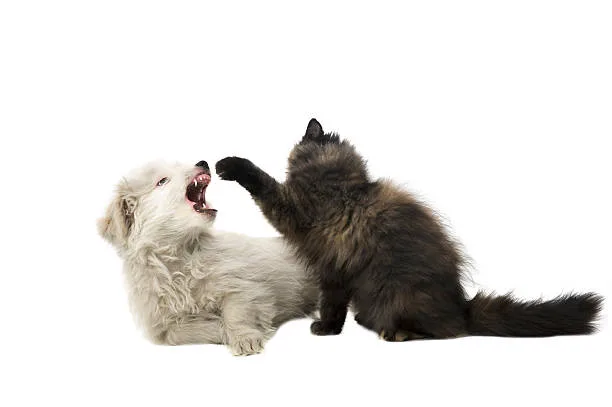
Identifying Cat-Friendly Canines
Siberian Huskies are known for their friendly and sociable nature, making them one of the dog breeds that are predisposed to get along with cats. Their adaptable and gentle demeanor, coupled with a playful yet non-aggressive temperament, often sets the stage for successful cat-friendly partnerships.
When considering a dog breed to cohabitate with a cat, it’s essential to take into account the individual dog’s temperament and behavior. Siberian Huskies with a calm and patient disposition, along with a history of positive interactions with cats, are prime candidates for fostering a harmonious relationship between the two pets.
Additionally, selecting a Husky with a lower prey drive and a propensity for socializing with other animals can greatly enhance the likelihood of a successful and mutually enriching companionship with a feline counterpart..
Discover more about how dogs of certain breeds, like the amiable Siberian Husky, can develop heartwarming companionships with their feline housemates. Dive into our comprehensive guide on the Fluffy French Bulldog: I promise you will worship this puppy!, showcasing a contrasting perspective on pet relationships and characteristics.
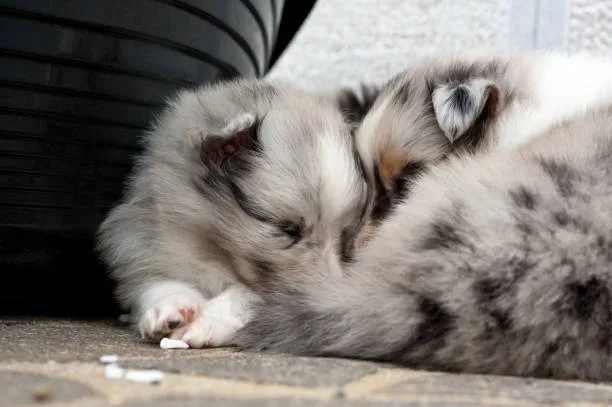
Socializing Siberian Huskies for Successful Cohabitation
Siberian Huskies are known for their social nature and can live harmoniously with cats when properly socialized from an early age. The key to successful cohabitation lies in introducing the Husky to various social situations and environments, including interactions with cats, during their critical development period.
Socialization techniques such as supervised introductions, positive reinforcement, and desensitization to the presence of cats can help Huskies acclimate to their feline counterparts. Environmental conditioning, which involves creating a safe and calm space for both the Husky and the cat to interact, is also crucial for fostering a peaceful coexistence.
The critical period for social development in both dogs and cats should not be overlooked, as it sets the foundation for their future interactions. By focusing on early and continuous socialization, Husky and cats can get along, creating a harmonious living environment for both pets..
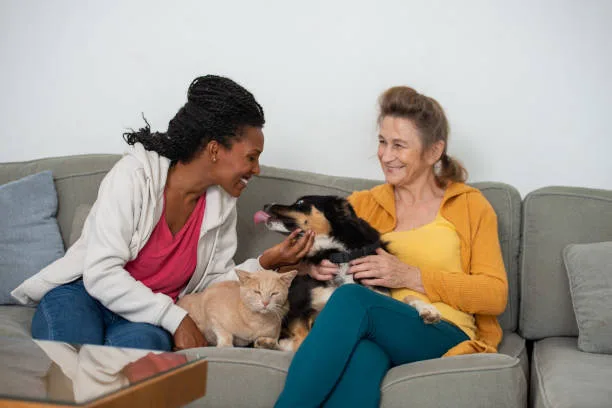
Balancing Husky Energy Levels with Cat Safety
Huskies are known for their high energy levels, which can pose a challenge when cohabitating with cats. To create a harmonious environment, it’s crucial to address these energy levels in a way that ensures the safety and comfort of the cats in the household.
Regular exercise is key to managing a Husky’s energy, and providing outlets for mental stimulation can also help to keep them occupied. Engaging the Husky in activities that redirect their prey drive, such as interactive toys and puzzle feeders, can help to channel their energy in a positive direction.
Additionally, establishing boundaries and providing separate spaces for the cat can help to prevent boisterous play from escalating and ensure that both pets feel secure in their environment. It’s essential to find a balance that allows the Husky to thrive while prioritizing the safety and well-being of the cats.
Overall, managing a Husky’s high energy levels involves regular exercise, mental stimulation, and redirection of prey drive through interactive toys and activities. Creating separate spaces and establishing boundaries can help ensure the safety and comfort of cats in a shared household.
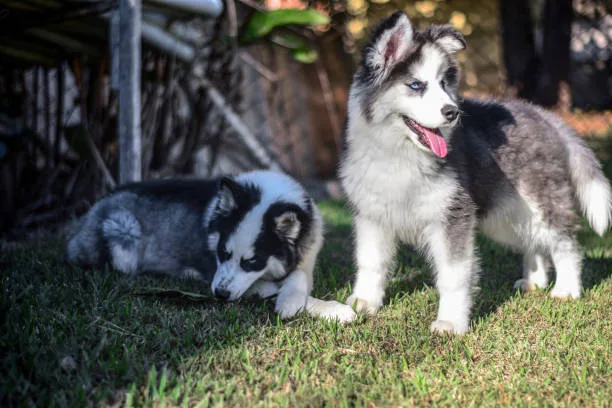
Positive Reinforcement Strategies in Husky Training
Positive reinforcement is a highly effective approach when it comes to training Huskies, especially in shaping their behavior around cats. Using positive reinforcement consistently not only aids in obedience training but also strengthens the bond between the Husky and the cat.
This method involves rewarding desirable behaviors with treats, praise, or toys, encouraging the Husky to repeat those behaviors. By consistently rewarding positive interactions and behaviors around the cat, the Husky learns to associate these actions with favorable outcomes, ultimately fostering a harmonious relationship between the two pets.
Positive reinforcement plays a pivotal role in shaping the Husky’s behavior, as they learn to associate the presence of the cat with positive experiences.
This can lead to a deeper understanding of boundaries and acceptable behaviors around the cat. Moreover, the use of positive reinforcement can help in redirecting the Husky’s prey drive and boisterous play towards more appropriate activities, creating a safer and more enjoyable environment for the cat.
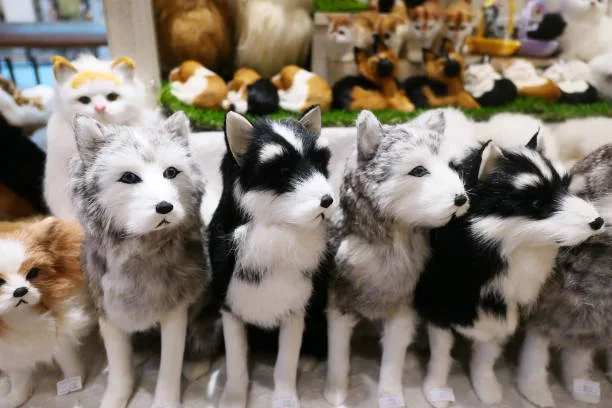
Conclusion: Building a Harmonious Household
Building a harmonious household with both Huskies and cats requires patience, understanding, and consistent training. It’s essential to recognize and respect the individual needs and instincts of each pet to foster a peaceful living environment.
By investing time in proper introductions, ongoing socialization, and positive reinforcement training, Husky and cats can get along and thrive together in a harmonious and secure household.

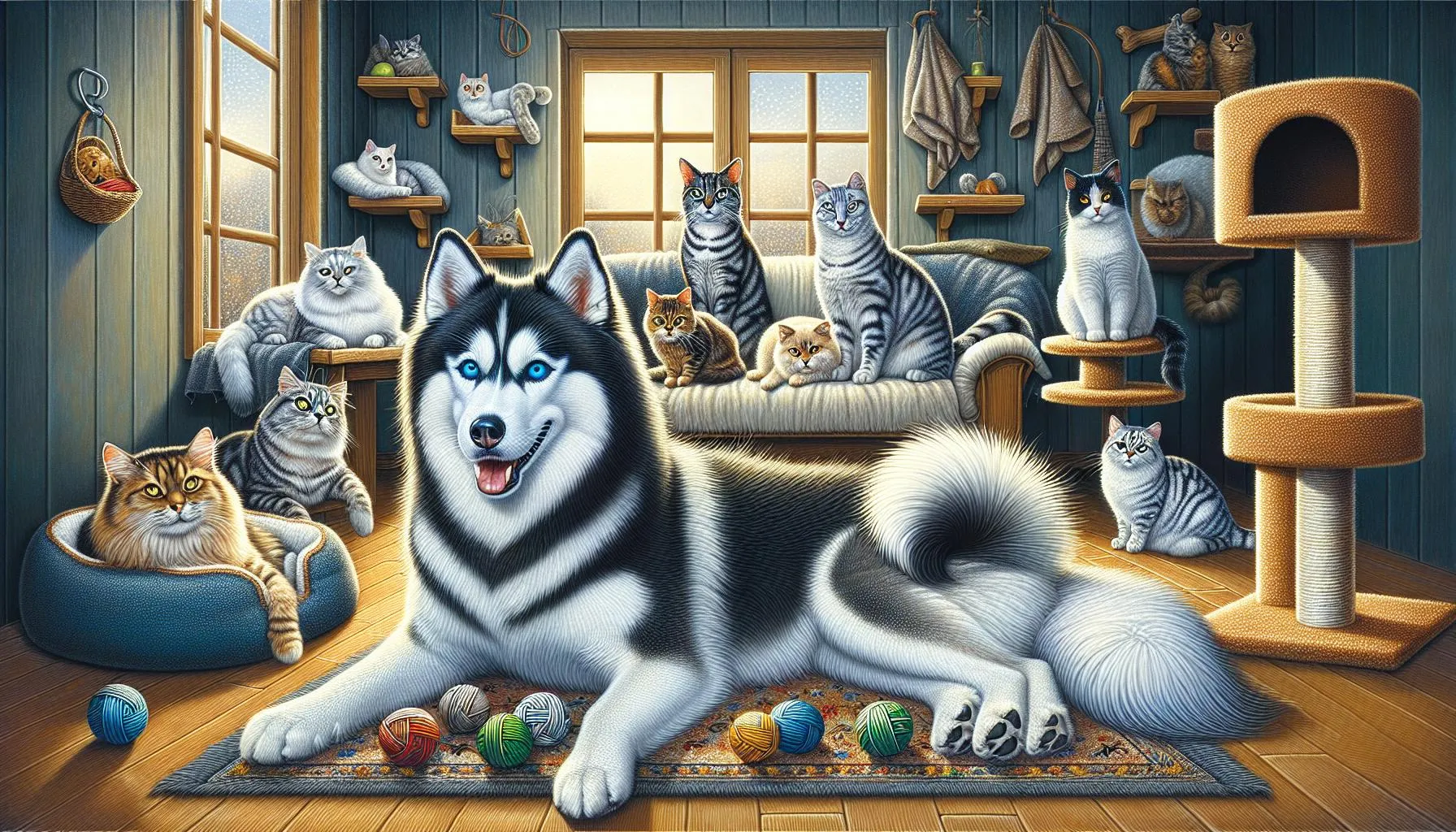
Leave a Reply